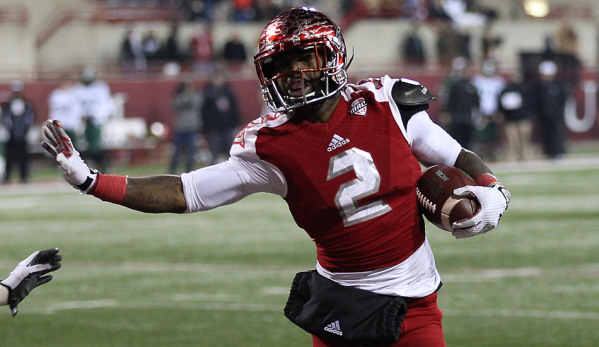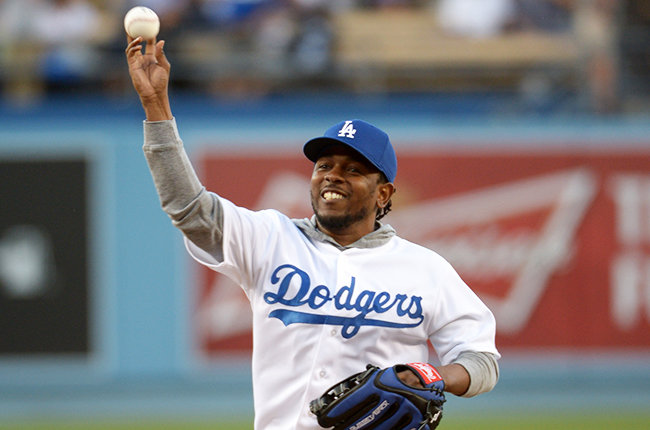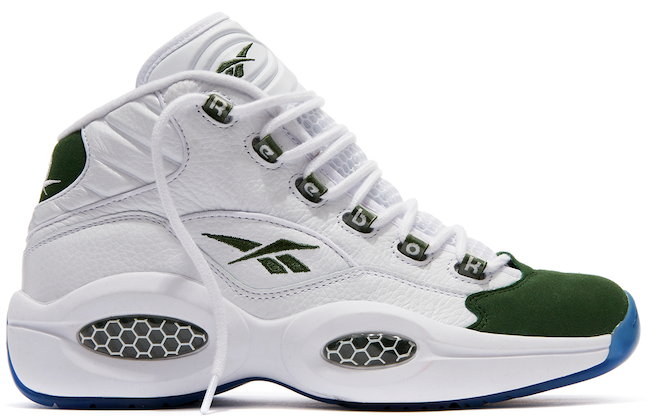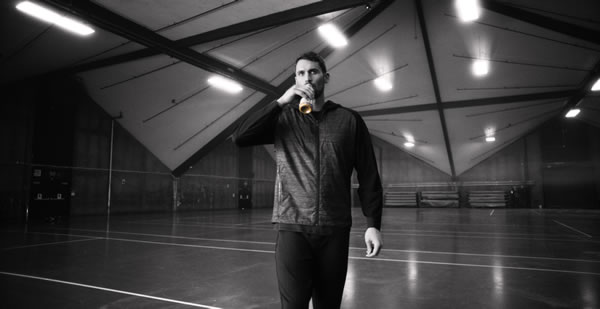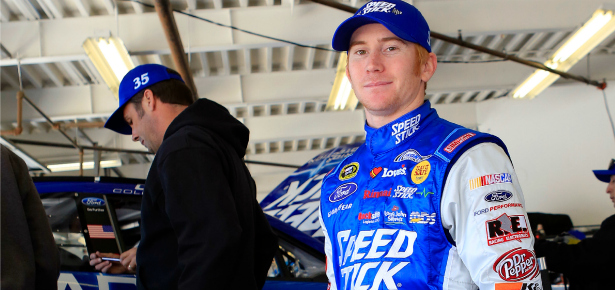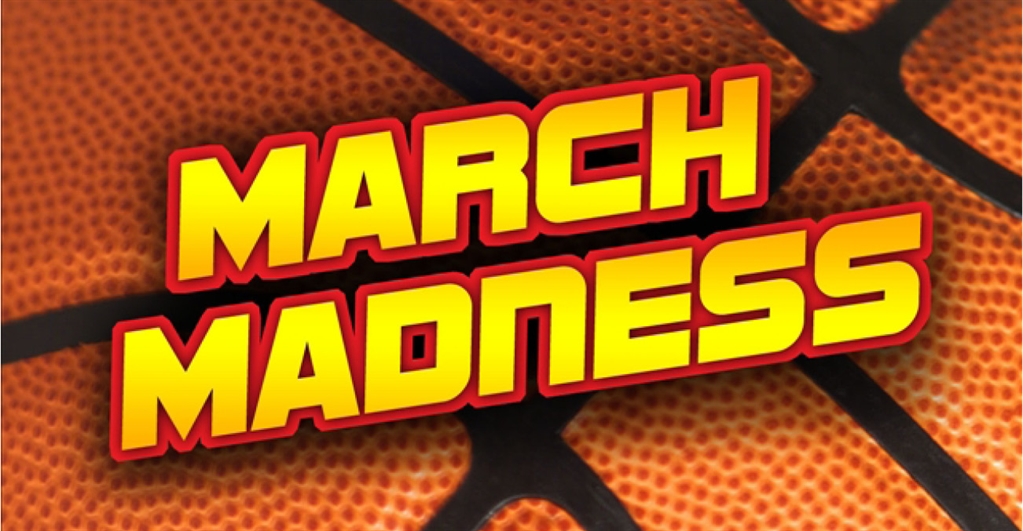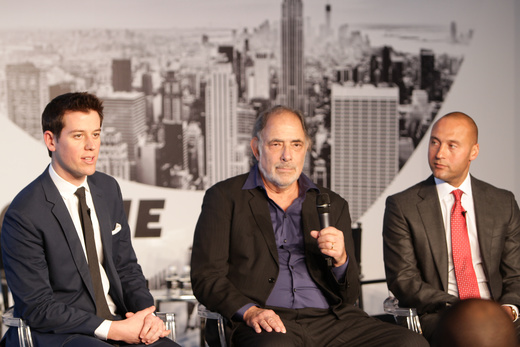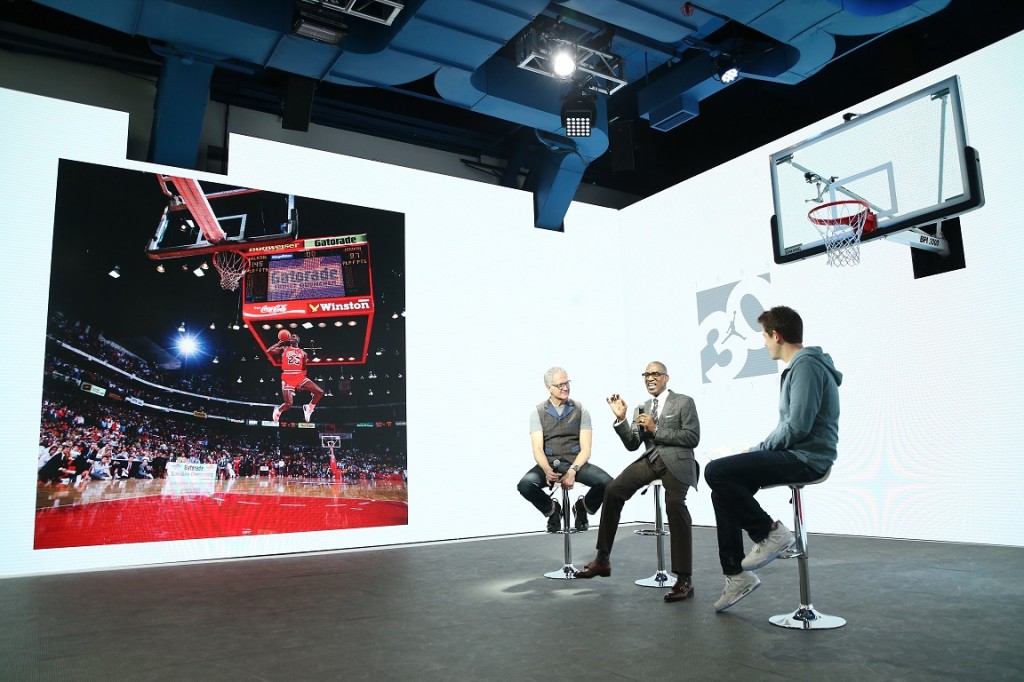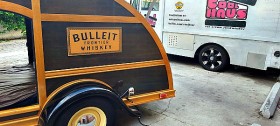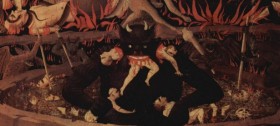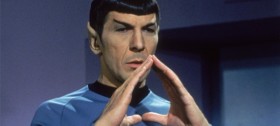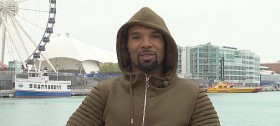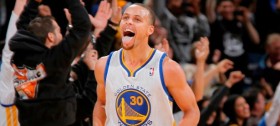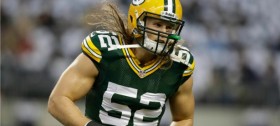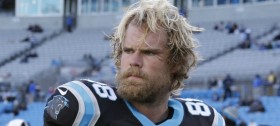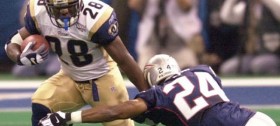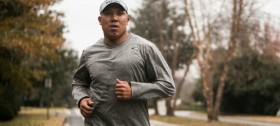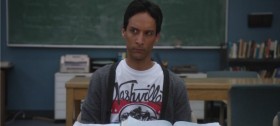Sports

Quinten Rollins Interview

Exactly 256 players heard their names called during the seven rounds of the 2015 NFL Draft. One of those guys was University of Miami (Ohio) cornerback Quinten Rollins, an intriguing prospect that the Packers selected with the 62nd pick overall. Rollins played four years of basketball in college and finished second in school history with 214 career steals. After securing a fifth year of eligibility, Rollins turned his attention to football, a sport he hadn’t played since high school.
The results were pretty impressive. Playing in just one season, Rollins racked up 72 tackles and seven interceptions in 12 games. That single season performance earned him MAC Defensive Player of the Year honors. He was invited to the Senior Bowl and kept things rolling, securing an interception in that game as well.
By all accounts, Rollins just knows how to get after it. He’s the only basketball player in Miami history to register two 7-steal games. His ball-hawking skills are unquestioned. He was a turnover machine on the football field and the guy likes to tackle, too. He may not have years of experience under his belt, but the dude’s a proven athlete who has shown that he can get results. I got a chance to chat with Rollins a couple weeks before the draft.
So what made Rollins go back to football?
“It was the right move,” he said. “I thought about playing football out of high school. I was playing both basketball and football, but basketball is the path that I chose for education purposes. It was my first opportunity to get to college. My first scholarship offer my junior year. I always knew that I would get back into football. It was just a matter of when and where. I thought about it after my sophomore year, but it didn’t happen. Then my senior year came around and I got an opportunity for a fifth year, and I just took a chance. I decided to sit down and meet with Coach Martin. I was in on a trial basis for spring ball. He gave me the opportunity to come out and earn a scholarship, and that’s what I did.”
I had read that Rollins considered playing basketball overseas, but ultimately, that idea didn’t appeal to him.
“Well, I’m a father. I had already been away from my daughter, being away at college with a 24-7 demanding schedule as far as academics and athletics go. I just didn’t want to go that far away from her. I felt like it would be better for me to stay over here in the US and get back into football. It was just a matter of when and where, and it just happened to work out perfect.”
Rollins is working with Speed Stick on their #DefyTheDoubt campaign. The experience of going from a student athlete to a professional with corporate sponsors supporting you as you make the leap to the next level has got to be a trip, right?
“It’s great,” Rollins said. “I’m blessed that Speed Stick gave me the opportunity to share my journey up until this point. Hopefully it continues to get even better as I continue to grow as a person and as an athlete. It’s definitely surreal to get opportunity to work with these guys like Speed Stick to get these types of endorsements. But at the end of the day, it still matters what you do and how you represent yourself as a person and as an athlete. I still have a lot of work to do, but it’s definitely been a blessing that they’ve allowed me to share my story and my journey. Hopefully, like I said, it continues to keep getting better.”
When tight ends like Tony Gonzalez, Jimmy Graham or Antonio Gates make plays in the NFL, there seems to be some sort of rule that an announcer must always reference the fact that they played basketball. Seriously, has Jimmy Graham ever caught a touchdown without an announcer mentioning the phrase “former basketball player?” It doesn’t happen. It gets mentioned every single time the guy scores. And he’s scored 51 touchdowns in five NFL seasons. This only seems to apply to offensive players though. I asked Rollins what skills he honed on the court that could make him a defensive difference-maker on the football field.
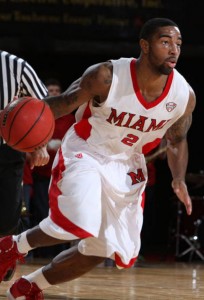 “Man-to-man defense in basketball,” Rollins said. “That helps me tremendously in man-to-man coverage on the football field as far as my feet go. In basketball, it’s all about your feet. Sliding and moving your feet. It’s the same in football, but in the NFL you can’t put your hands on a guy past five yards. So that’s definitely been one of the most vital things. And then as far as end zone coverage and being point guard, you got to see the whole floor. That’s allowed me, in end zone coverage, to open up and get back to my natural instincts of being a point guard and seeing everything that’s going on and see the big picture. And anticipation. As a point guard, you got to always be a play ahead. It helps in football, too. I can anticipate things and just see it happen before it does happen. Also, having that next play mentality. As a point guard, you’re going to make mistakes. You’re going to have turnovers. You’re going to have bad plays. But just like in football, you might get beat on a catch, but you got to have that next play mentality. You can’t have your head down, because it’s most likely going to come right back at you so you got to be prepared for it.”
“Man-to-man defense in basketball,” Rollins said. “That helps me tremendously in man-to-man coverage on the football field as far as my feet go. In basketball, it’s all about your feet. Sliding and moving your feet. It’s the same in football, but in the NFL you can’t put your hands on a guy past five yards. So that’s definitely been one of the most vital things. And then as far as end zone coverage and being point guard, you got to see the whole floor. That’s allowed me, in end zone coverage, to open up and get back to my natural instincts of being a point guard and seeing everything that’s going on and see the big picture. And anticipation. As a point guard, you got to always be a play ahead. It helps in football, too. I can anticipate things and just see it happen before it does happen. Also, having that next play mentality. As a point guard, you’re going to make mistakes. You’re going to have turnovers. You’re going to have bad plays. But just like in football, you might get beat on a catch, but you got to have that next play mentality. You can’t have your head down, because it’s most likely going to come right back at you so you got to be prepared for it.”
Some scouts have projected Rollins as a safety in the NFL. Does he have a position preference for the next level?
“I really don’t care where I play at” he said, “whether it be nickel, outside, inside, back end safety. I’m just ready to get somewhere, learn the system and get going.”
So why defense? Rollins played running back at Wilmington High School in Ohio. He had a chance to play running back in college as well, but Rollins chose defense because of the upside potential at the professional level.
“When I gave coach Martin my film,” Rollins said, “he obviously saw me at running back in high school. He gave me the option, when we sat down and met, he said you can play offense or you can chose defense. After going over the pros and cons for each, I felt defense was going to be better, especially for longevity purposes. Running backs really don’t play that long in the NFL, as opposed to corners. With my size and my athletic ability, I chose the more elite position. It’s valued more. So I figured that was the best route for me to go.”
Smart move, especially with his existing skill set. Big ballin’ tight ends who have size, can get separation and handle the ball in the paint/endzone have certainly become a thing in the NFL. But this could be another trend worth watching. The Packers took Rollins in the second round this year, but last season they selected Baylor CB Demetri Goodson in the sixth. Goodson was also a point guard who didn’t have a ton of football experience in college (he played basketball at Gonzaga). The emergence of highly athletic, ball-hawkish point guards in the secondary is worth monitoring. Especially when these top-flight athletes are making the conscience business decision to apply their skills at a premium position that tends to attract big money.
Basketball and football are obviously different. Sure, the similarities help a guy like Rollins, but he appreciates the differences as well.
“I love the way teams bond together, but that’s what was different. With basketball, we were a very close team, but you look at the work that a football team puts in, it’s totally different. Like how you can get a hundred guys all on the same page, working hard and everything. There’s just something about that that’s special,” he said.
At the end of the day, Rollins just loves to make plays. And big plays can be a lot bigger on the football field than on the basketball court.
“In basketball, there’s a lot of possessions. In football, the possessions are limited. So any time you get the opportunity to make a game-changing play to impact the game in a vital way,” he said, “it’s something special.”
Talking with Rollins, it’s clear that he loves football.
“Everything that comes with the game, I enjoy,” Rollins said. “I actually didn’t realize I missed it that much until I got back out there on the field again. I mean, there’s nothing like Friday night lights, obviously, but Saturdays are special, too. And I’m looking forward to see what Sundays are like.”
May 4th

Kendrick Lamar Throws Out The First Pitch At Dodger Stadium
Kendrick Lamar was pumped to throw out the first pitch at Dodger Stadium in Los Angeles thi s week, wearing the new Reebok ZPump Fusion sneakers to deliver the ceremonial first pitch before the Dodgers vs Giants game.
s week, wearing the new Reebok ZPump Fusion sneakers to deliver the ceremonial first pitch before the Dodgers vs Giants game.
Proudly wearing his Dodgers blue and flashing a huge smile, he made a perfect pitch right over home plate as “King Kunta” (from his latest album To Pimp A Butterfly) blared over the loudspeakers.
The Reebok ZPump sneakers (black/graphite/white) are available now for $110 at Reebok.com, Finish Line and additional retailers.
May 1st

Reebok Classic Brings Back The Question Mid “Green Fifteen” To Celebrate The Madness
Reebok Classic is giving college basketball fans one more thing to celebrate this March. Announcing a limited release of the green/white Question Mid, Reebok Classic is proud to bring back one of the most requested colorways of the iconic model that dominated the tourney years ago.
Available in adult and grade school sizing, these won’t last long. Head to Finish Line, VILLA, Shoe Palace, MR. ALANS, or Reebok.com on April 3rd and get yours for $140 ($95 for grade school).
Mar 26th

Kevin Love’s Secret Training Technique
Did you know that Kevin Love works out with a robot? Well you do now. Love joins a long-line of elite athletes that have worked with Chocolate Milk. Athletes including Apolo Ohno and Hines Ward have found out the benefits of chocolate milk. Now Kevin is the first NBA player to partner with the “BUILT WITH CHOCOLATE MILK” campaign. Backed by more than 20 studies, chocolate milk has shown to be a great source of high-quality protein, and is becoming an increasingly popular post-workout drink of choice for athletes looking to build lean muscle and maximize recovery after a workout.
Watch his new workout routine with his new coach.
Mar 18th

Cole Whitt at the Daytona 500
I’m not going to pretend to know Cole Whitt. I mean, how can you really get to know someone after two interviews and a weekend in Daytona? But I think I got a good read on the guy, and if I could use one phrase to describe him, I’d say that he’s approachably focused.
He’s equal parts humble and hungry. Whitt doesn’t carry himself like a superstar race car diva. He’s got work to put in and he welcomes that work. That doesn’t mean he won’t flash a big, genuine smile when meeting a fan or take time to answer silly questions from bloggers like me.
When you meet Cole, you sense quickly that he’s a private guy. Not a limelight seeker by any stretch. He prefers CrossFit and the outdoors to press rooms and podiums. Behind this surface of shyness, though, there’s a big heart and a ferocious sense of purpose. You don’t earn a nickname like the Ginger Lion by being a pansy.
It should be noted, that racing ain’t easy, man. Especially if you want to compete in the NASCAR Sprint Cup Series, the nation’s highest stock car division. It’s a taxing endeavor all around. You need financial backing from your teams and sponsors, and soul support from your family and crew. On a weekly basis, you have to overcome the physical rigors of driving hundreds of miles with inches separating you from disaster. Then there’s mental prep required to get your head right before, during and after competition.
This is some seriously stressful stuff, but the stakes are high, my friend. This year’s Daytona 500 had a purse of over $18 million. That’s a lot of coin for 43 drivers to chase in one day.
Thanks to our friends at Speed Stick, we were able to follow Cole Whitt’s full experience of the 2015 Daytona 500. Join us for a moment as we step into his racing shoes…
Imagine you’re a pocket-sized, 23-year-old professional driver entering your second full season in the NASCAR Sprint Cup Series. You’re a full-blown ginger and your height and weight aren’t listed on your NASCAR profile. The biggest expectations you have come from within. You’re confident, because you’ve been racing for more than half your life. There’s doubters all around, but not in your inner circle.
Your first season had its set of challenges. Your car got jacked up during practice at the Daytona 500 and there was no backup car available. Your team rallied to make repairs, just to get you into qualifying. With no guarantee that you’d even compete, you make up eight spots on the final five laps of your Budweiser Duel to secure entry in the 2014 Daytona 500.
You showed a ton of promise in your first full Sprint Cup season. You finished better than you qualified in three of every four races you entered. You created some rookie of the year buzz and things looked promising.
With little warning, your racing team shuts down operations in April. You switch teams to close the year out and it’s unclear who’ll have a spot for you next season. Shoulder surgery that cuts into your offseason prep, but at least you secured a spot a new team. With your second season set to begin, you find yourself back in Daytona needing to fight your way in again.
This is where the Ginger Lion stood, right before the Budweiser Duels. Running in the #35 car for Front Row Motorsports, Cole Whitt was on the outside looking in and needed a good showing to earn a spot in the Great American Race. It’s #DefyTheDoubt time for damn sure.
“I told all the guys, it’s like, everything kinda rides on the 500,” Whitt said after qualifying. “If we can get into the 500, from there, the pressure is a little bit off. We still got a lot of work to do for sure, don’t get me wrong. But missing this race could turn the whole career to the wrong side. It could make it pretty hard to get through the season.”
So, no pressure, right?
“I’ve been through this situation more times than I want to be. Last year was very stressful and this year was just as stressful. As far as I was concerned, we had to run top 15. And we did.”
Whitt’s strong finish in the Budweiser Duels meant that he punched his ticket into Daytona to start the 2015 season.
“To be able to lock ourselves in and get all three cars in and push Front Row down the right path, it’s going to be awesome. I look forward to see what we can do this year.”
Speed Stick gave us the opportunity to follow Whitt and his #DefyTheDoubt attitude around Daytona for an important weekend in his young career. Here’s the beat and video we put together to chronicle the experience:
November Update
The folks at Speed Stick shared this sweet video chronicling our boy Cole Whitt’s complete sophomore season in NASCAR. Check it out:
Mar 12th

Check Out Game Changing Moments From The NCAA Tourney
With the “Madness” almost upon us the mobile app, Thuuz Sports has worked on finding the craziest games that came down to the wire. So while you are are in the office and away from your TV or tablet use the Thuuz Sports app to make sure you are following games that are the ones that are a fight to the finish.
Here is a look at a few games that Thuuz Sports have found to be the ones that keep biting your nails until a victor is crowned.
4. Michigan 87 vs. 1. Kansas 85
Michigan overcame a 14 point 2nd half deficit to win 87-85 in overtime. Trey Burke led the way for Michigan with 23 points, scoring all of them in the 2nd half and in OT. Ben McLemore had 20 points for Kansas in its losing effort.
8. Kentucky 78 vs 1. Wichita St. 76
Kentucky ends Wichita’s magical run in the Round of 32. VanVleet misses the winning shot at the buzzer that could have prolonged the Schockers perfect season. Andrew Harrison had 20 points and Aaron Harrison added 19 in Kentucky’s 78-76 victory.
8. Kentucky 75 vs. 2. Michigan 72
Kentucky ends Michigan’s bid to return to the Final 4 for a 2nd straight year with a thrilling 75-72 win. Aaron Harrison hits the game winning 3 with 2.3 seconds left on the clock to send Kentucky to the Final Four. Kentucky’s Julius Randle logged a double double with 16 points and 11 rebounds.
9. Wichita St. 68 vs. 1. Louisville 72
Russ Smith had 21 points for Louisville, rallying from a 12 point 2nd half deficit to advance to the Final. Kevin Ware’s injury in the previous game helped Louisville play inspiring basketball with Luke Hancock adding 20 points off the bench. The Cardinals stout defense was too much for the Shockers, ending its Cinderella story.
10. Stanford 60 vs. 2. Kansas 57
Cardinal with the huge upset in the 2nd round, sending Wiggins and Kansas packing. Wiggins was just 1 for 6 as the Cardinal defense bothered him all game. Powell led the way for Stanford with 15 points and 7 rebounds.
14. Mercer 78 vs. 3. Duke 71
Duke’s 15 3s, a season high, were not enough to overcome the Bears’ “Dunk City” offense. Jake Gollon scored 20 & Daniel Coursey added 17 in Mercer’s huge 1st round upset. Duke failed to hold a 5 point lead with 4:52 left as the Bears came roaring back to win 78-71.
9. Wichita St. 70 vs. 2. Ohio St. 66
Wichita St. pulls the amazing upset to send it to its 1st Final Four since 1965. Malcolm Armstead led the way with 14 points for the Shockers. Wichita almost dropped a 20 point lead, but late heroics from VanVleet secured Wichita St’s Final Four berth.
11. Tennessee: 71 vs. 2. Michigan: 73
Michigan survives after almost giving up a late 15 point lead. A tough charge call on the Volunteers’ Stokes with 6 seconds left secured the late win for Michigan. Jordan Morgan led the way with 15 points for Michigan.
Mar 12th

WWE Superstar Shawn Michaels Talks About His New Book And Wrestling
In Wrestling for My Life, WWE superstar Shawn Michaels shares from his heart about the highs and lows of his life inside the WWE. Included are some never-before-shared stories and an intimate look into his career as well as stories of hunting, family, and faith.
With millions of fans, Michaels had adulation and all the attention he could ask for, but he discovered there was something more. When he became a committed Christian during his years in the WWE it had to affect everything. Michaels reveals what it is like to be a man of faith in this unusual world and shares insights for all of us.
You can win a copy of the book by following MANjr. on Twitter. Winners will be randomly selected. Here is Shawn sharing some thoughts on his book.
Your first book Heartbreak & Triumph: The Shawn Michaels Story came out a decade ago and was a bestseller. Why did you decide to write another autobiography, and how is this one different?
Shawn Michaels: Writing Heartbreak & Triumph was such a rewarding experience. Looking back on my wrestling career and describing my climb the top of an extremely competitive sport helped me better understand who I was, where I’d been, and how I fit into the legacy of the WWE. Plus, I got a kick out of knowing that the details and explanations I offered would mean a lot to fans out there, many of whom have followed my career so loyally for so long.
My new book, Wrestling for My Life, raises the stakes a bit, I think. While Heartbreak & Triumph was a mix of professional and personal reflections, Wrestling for My Life is extremely personal — almost wholly so. That doesn’t mean I don’t talk about wrestling. After all, it’s a big part of who I am, and it always will be. I just talk about my career in the context of this incredibly personal thing: my faith. The book focuses on my life as a Christian — what that has meant for me and my family, and how it even happened in the first place.
Why did you feel compelled to write about your faith?
SM: For so much of my career, I was known — loved and hated — for being crude, arrogant, and offensive. It was part of the character I played, sure. But the bad guy I portrayed started swallowing up the real me, too.
Becoming a Christian gave me the second chance I never dreamed was possible. I want to talk about that. If the Creator of the universe loves and wants to save a punk like I was, what does that mean — not just for me, but for everyone else, too? I want to share that kind of life-changing story with people.
Yes , you write that as a pro wrestler, you liked being loved, but you may have liked being hated even more. Why?
SM: I enjoyed making people react. I really fed off of the energy it created. Of course, I came to realize that as much as some fans hated me, I hated myself more.
When did you realize that you actually hated yourself that you wanted your life to change?
SM: I hit rock bottom. I was married to the love of my life, Rebecca, and our son Cameron had just turned two. Our Friday night ritual was pizza and chocolate chip cookies, and we all loved it. I had a habit of pills — years of wrestling had beaten up my body, so excuses to take them were easy to find. I was really out of it one Friday night, and Cameron noticed. He crawled on top of me and said, “Daddy’s tired.”
I go into more detail in the book. Basically, I was in a fog — and it hit me that my son was starting to notice. I was messing up his life now — not just mine. I broke down that night, disgusted with myself, and just prayed. I asked God to change me.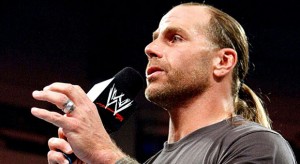
Your wife Rebecca has been quite a force in your life, hasn’t she?
ASM: Rebecca prayed for me loyally and constantly, while remaining supportive and nonjudgmental. She never nagged me about God. It’s not that she didn’t want me to change. She definitely did. She just took her concerns to God. Out of the two of us, she got serious about her faith first — started attending a Bible study, and just exuded peace. I’m eternally grateful for her.
You grew up going to church, but you say you didn’t become a Christian until 2002. Can you explain what you mean?
SM: Yes, I grew up Catholic. I was even an altar boy, which will probably hard for some of my fans to imagine. As a grown man, I did not live a Christian life. I didn’t have a relationship with Jesus.
I had what I can only describe as a spiritual experience while I was hunting in the Texas Hill Country. I knew I needed something else in my life — something big. For me, that was Jesus. Once it really hit me that he gave his life for me, I wanted to follow him in every way I could. It was a revelation. And it was liberating. All of the stuff that used to matter — fame, money, excess — just didn’t appeal to me at all anymore. I became focused on my family and trying to please God in any way I could.
What appealed to you most about Jesus?
SM: Jesus was tough, man. I mean that physically, of course, but also emotionally and mentally. At first, I was stunned by Jesus’s physical strength — all that he endured. As I grew in my faith, I became more and more awestruck by his emotional and mental toughness, which came across in the compassion and forgiveness he so generously gave others who really let him down. Even though I know I can’t ever live up to the way Jesus lived, he’s my goal.
You’ve retired from wrestling twice. Can you talk about the decision to go back?
SM: The first time I retired in 1998, I was forced to stop wrestling because of injury. Vince asked me to come back in 2002, first just part-time. My family supported my decision to go back — that was key. And I prayed about it, trusting that God would show me what I was supposed to do. It became pretty clear to me that I was supposed to start wrestling again. The next year, I went back to wrestling full-time, which I continued to do until 2010.
At first, I was really worried that I wouldn’t be as strong physically as I’d once been. I didn’t want to return a weaker wrestler. Those concerns soon disappeared. Today, I genuinely feel that I can argue I was a better wrestler and performer in the second part of my career than the first.
What was it like to return to wrestling after becoming a Christian?
SM: Well, I wasn’t a Bible-thumping, in-your-face kind of guy about it. But I knew they’d heard that I’d become a Christian, and I wanted them to see firsthand how my faith had changed me.
It was an incredible opportunity to show how God can make a life better in a place where he wasn’t routinely discussed. Here were all these guys with vastly different backgrounds who wouldn’t have necessarily sought God out, but could discover him, ask me questions without feeling weird, and learn more about what having God in your life means — all backstage at a WWE match. Pretty awesome.
I also hoped viewers and fans would notice and wonder why I was different. It provided an incredible opportunity to show millions of people what God can do.
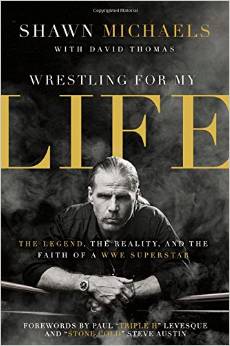 Did you ever feel torn between trying to please the wrestling community and following your faith?
Did you ever feel torn between trying to please the wrestling community and following your faith?
SM: At first, I was really intimidated about making my two separate worlds coexist.
When I returned to wrestling for the second time in 2002 — the same year I became a Christian — the environment was very different than it’d been in earlier years. Everyone at WWE was so accepting of my Christianity. I also noticed that the locker room culture in particular had changed. The guys felt freer — they shared more and admitted to feeling insecure or confused. Picture this: a bunch of wrestlers getting ready to head to the ring, gathering together and praying first. It happened, and I’ll cherish the memories of it forever.
Vince McMahon and his family were incredibly supportive of me. I did sometimes find it hard to reconcile my public persona with the expectations of fans and other Christians — but that wasn’t Vince’s fault. That was something I had to work through, as a new Christian, on my own. One situation in particular comes to mind. I said the word “damn” in a promo for an upcoming match, all as part of a storyline I was working on with my best friend Hunter — Triple H. I thought that since I was acting — just playing a part — it’d be no big deal. But a lot of people were really disappointed in me.
My dear friend Keith Parker pulled me aside after our Bible study once the spots had run and asked me about my decision. At first, Keith’s questions kind of rubbed me the wrong way. But later that evening, I realized he was so right. By making a compromise — even one that seemed pretty insignificant like uttering a single word — I was weakening my ability to share my story.
You talk a lot about Vince McMahon in a book about spirituality — that may surprise some people.
SM: Vince has always been incredibly loyal to me. He’s stuck by me through good times and bad — when I was actually a liability. He’s really nothing like the way he portrays himself on TV. I’m honored to know him. I do still love giving him a hard time, though — just because I’m a Christian now doesn’t mean I don’t like having a little fun at Vince’s expense every now and then. (Laughs.)
You also revisit famous and infamous episodes in your wrestling career in light of your newfound faith. What was that process like for you?
SM: Yeah, I felt like it was one of the most important things for the book to accomplish: looking at my past in light of my faith. The Montreal Screwjob is a perfect example. It’s still the biggest controversy in the history of pro wrestling. In 1997, my rival Bret Hart was set to lose his final match in his home country of Canada. He’d made it very clear that he would not give up his belt to me, but Vince decided behind the scenes that that was exactly what would happen. So, Bret lost to me in Canada, and was humiliated in front of his countrymen. Understandably, he was furious, and up until relatively recently, Vince had taken just about all of the heat for what happened.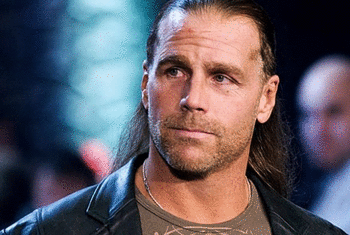
The thing is, I knew all about it. I was in on what happened. After I became a Christian, I gave an interview, and I could not lie about it anymore. So I came clean, and admitted my role.
At the time, Bret and I were not on speaking terms. We hadn’t been for years. Our path to forgiveness and reconciliation was long and difficult. Bret has described our ultimate peace as “cathartic,” and I think that’s a perfect way to put it. I also don’t believe it would have happened with God.
You talk a lot about forgiveness in the book.
SM: Yes. I like to say, “Forgiveness brings freedom.” I think there are two types of freedom. The first kind is the kind that says, “Okay, I have freewill. I’m going to do whatever I want.” That’s the kind of freedom that you have to give up in order to get the second kind of freedom, which comes only from God. It’s freedom from guilt and shame, and in return, you have a gratitude and peace that’s indescribable. It probably goes without saying, but just in case: I think the second type of freedom is way better than the first. And I’d definitely know.
You’re very candid about all kinds of difficulties you’ve experienced, both before you became a Christian and afterward. Some of your troubles included financial stress. Why did you feel like that was important to include that?
SM: My family has been incredibly blessed, financially and otherwise. But yes, we did have some trying times with an investment, and it took two years for our home in San Antonio sell. That was tough. I wanted to address it specifically because I think it’s important to acknowledge that once you start following God, your life doesn’t instantly become trouble-free.
The stressful times we have are reminders to trust God — even when it’s so tempting to take matters into your own hands.
You’ve also been really successful cohosting a hunting show on the Outdoor Channel, right? Why hunting?
SM: Yes, along with my great friend Keith Mark, I have cohosted MacMillan River Adventures for the past four years. I enjoy that show so much — it’s hard work, the extent of which I don’t think I completely realized when I signed on. (Laughs.) When I’m outdoors, I feel close to God.
Wrestling for My Life is a personal story, but you also make some observations about contemporary society’s expectations of men. Can you talk about that?
SM: I worry that as so many men chase what culture says is “cool” and expected today, they’ve abandoned virtues that really matter, like grace, forgiveness, character, and integrity. In fact, I think that men who embody those virtues are often publicly mocked. Our society needs more men who will stand up and be warriors of strength and grace — no matter which way the wind is blowing.
What are your primary goals these days?
SM: I’m in the process of continually being changed for the better. Becoming a Christian gave me a confidence I’d never experienced before — it’s also given me an overwhelming peace. I don’t need to be the center of attention anymore. I don’t need to be relevant. I am working to be the best husband and father I can. I’m constantly pursuing being transformed into the man God wants me to be.
Feb 24th

An Inside Look At Derek Jeter’s The Players Tribune Pro Athlete Roundtable
Have you checked out The Players’ Tribune? It is a new media platform that shares the voices of professional athletes, bringing fans closer to the games they love than ever before. Founded by Derek Jeter, The Players’ Tribune aims to provide unique insight into the daily sports conversation and to publish first-person stories directly from athletes. From video to podcasts to player polls and written pieces, The Tribune will strive to be “The Voice of the Game.”
Here are some pictures from this weekend’s party and roundtable chat.
Feb 15th

Jordan Brand’s Carmelo Anthony And Tinker Hatfield Attend All-Star Weekend Event
Today, the Jordan Brand celebrated its 30th anniversary, opening its NBA All-Star Weekend experience at Pearl Pavilion across the street from Madison Square Garden. Two of Michael’s oldest friends and colleagues in the business, famed footwear designer Tinker Hatfield and Jordan Brand’s Howard “H” White took part in a Q&A session, telling never-heard-before stories of the three decades since the launch of the Air Jordan I.
In addition, Jordan brand athlete – New York Knicks All-Star Carmelo Anthony – attended the event, checking out the venue’s Hallway of Greatness , a collection of Walter Iooss Jordan photos, and an interactive experience where fans can emulate several of Jordan’s greatest shots ever.
Sports photographer Walter Iooss’ iconic imagery of Michael Jordan on display at Pearl Pavilion, New York City
 Fans have an opportunity to relive 30 years of the Jordan Brand’s history at the Hallway of Greatness in Pearl Pavilion, New York City
Fans have an opportunity to relive 30 years of the Jordan Brand’s history at the Hallway of Greatness in Pearl Pavilion, New York City
Feb 13th

Sammy Watkins Interview
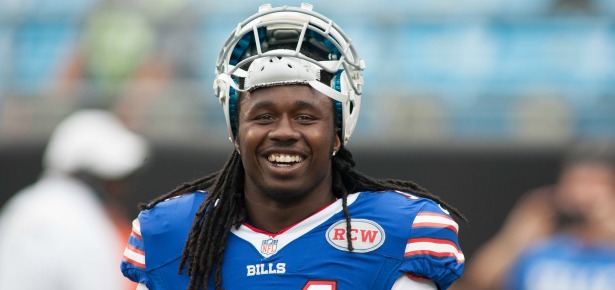
Sammy Watkins just finished up a phenomenal rookie season and along with a stellar defense, is bringing hope back to a weary fan base in Buffalo that is long overdue for a team to be hopeful about. Watkins completed a successful rookie campaign, setting franchise marks for both receptions and yards despite having his starting quarterback benched early in the season and finishing out the year with a solid but unremarkable Kyle Orton.
The Bills gave up quite a bit for the opportunity to move up and select Watkins in the form of two first rounders and a fourth round pick. This along with the successful rookie campaigns of other receivers in what will likely go down as one of the deepest and most talented receiver classes of all time had Watkins coming into the league with even more pressure than usual for first round picks.
Watkins responded by persevering through injuries, quarterback changes, drawing the defenses number one coverage man, and in some cases, entire games of double teams, by repeatedly coming up big for his team when they needed him. His most noteworthy moment according to himself and others was a game winning catch against the Vikings in week seven with the season already on the line with a tough schedule ahead of them.
Sammy sat down with Man Jr. to discuss his transition into the league, the coaching changes and volatility in Buffalo, adjusting to life in his new home, and his work on Pepsi’s Hype Your Hometown contest. Check out the audio below:
Audio clip: Adobe Flash Player (version 9 or above) is required to play this audio clip. Download the latest version here. You also need to have JavaScript enabled in your browser.
Feb 11th
